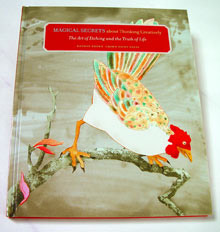Re-identification

(Image on invitation: Mandarin – drypoint by Noriko Saito)
This collaborative exhibition features contemporary works on paper from three printmaking studios: Malaspina Printmakers in Vancouver, Canada; Shin-Yokohama Printmakers Association in Yokohama, Japan; and Grafisch Atelier Utrecht in Utrecht, The Netherlands.
Last year, Japan hosted the first of these exhibitions traveling across the country. This year Vancouver, Canada will be the starting point of the Canadian leg of the exhibition before proceeding to the Netherlands in 2007.
The Pendulum Gallery is the first of several venues to show some of the numerous works, with an opening reception this evening, Thursday Sept.7th 6 – 8 pm. The exhibition continues to Sept.23, 2006 at 885 West Georgia St., Vancouver. Check the media release for some more images.
Malaspina Printmakers will feature more of these printworks in their gallery on Granville Island Sept.12 – Oct.1, 2006. Then the Capilano College Studio Art Gallery in North Vancouver will be host Oct.16th – Nov.4, 2006, along with Thompson Rivers University in Kamloops, BC from Oct.12 – Nov.9, 2006.









